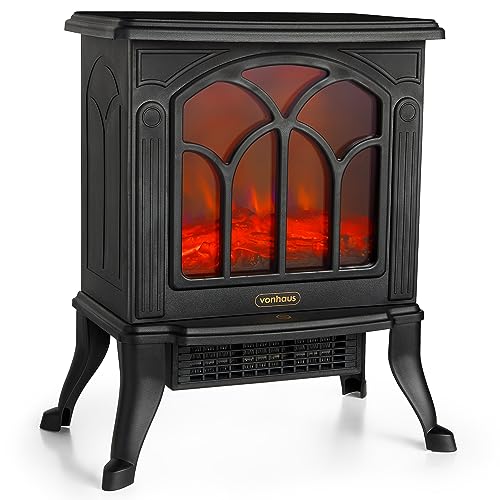Ethanol fireplaces are an excellent alternative to gas or wood fires, since they don't require a flue or chimney. They don't generate smoke or ash, or create any mess and can be easily moved from one location to another.
 Only use bio-ethanol on burners specifically designed to burn the fuel. The warranty of your burner could be invalidated when you use other liquid fuels or gels.
Only use bio-ethanol on burners specifically designed to burn the fuel. The warranty of your burner could be invalidated when you use other liquid fuels or gels.Cost
The cost of a bioethanol fireplace varies in accordance with the model and type you select. There are models ranging from a few hundred to a few thousands dollars, but they're usually less expensive than a wood or gas fireplace. Some models are freestanding and others are attached to a fireplace, or recessed into the wall. Ethanol fires are also more eco sustainable than wood-burning ones.
Bioethanol fires are popular because they offer a natural, beautiful flame that is free of any smoke or soot. They can be used nearly everywhere and are simple to maintain. It is recommended to only make use of bio-ethanol fuels that have been specifically made for these fireplaces. Other kinds of fuel can cause damage to the burner and increase the risk of fire. In addition, you should not store flammable materials close to the bioethanol fire.
Ethanol fireplaces are fantastic for heating rooms, but they should not be considered your primary source of heat. They are more efficient than wood-burning fire places and can generate plenty of heat, about 2kW on average. It's not enough to warm an entire home, but it will definitely warm up a smaller room.
In addition to the actual expense of an ethanol fireplace, you must also consider other expenses associated with maintaining the unit. The fireplace should be kept in a safe place and out of reach of children and pets. Always follow the manufacturer's guidelines for adding fuel, putting the flame out and allowing the flame to cool.
A fireplace that is ethanol-based is a great alternative to a wood-burning stove. The primary benefit of this type of fire is that it doesn't require a chimney, which means you can save money on the installation and maintenance costs. It is also safer than other types of fireplaces. But it is still recommended to seek advice from a professional before making a final decision. This way, you can be sure that the fireplace will be installed safely and correctly.
Environmental impact
A ethanol fireplace is an environmentally friendly alternative to traditional fireplaces that burn wood. Bioethanol fuel is made from waste plant products like straw, maize, and corn. The biofuel liquid is further distilled to make it burn efficiently and effectively. This type of fuel is considered to be renewable energy source that does not emit toxic emissions or odours. Additionally, it is free of soot and smoke, making it a safer choice for your home over other types of fires.
They can be installed in any space in your home, as they do not need venting or chimneys. Most models come with a remote control. A majority of them also have a built-in cooling system to prevent the fuel from overheating. They can be used as a primary heating source or as an additional heating system. They are also great for those who live in apartments or condos.
Bio ethanol fireplaces produce very low levels of odours, which makes them a great option for homes with people who suffer from allergies or asthma. In fact, this kind of fireplace can be installed in a nursery for babies or in a child's bedroom. It is important to remember that these fireplaces should be kept away from any flammable items, such as furniture and curtains.
The ease of use of an ethanol fire is one of its greatest advantages. It is much easier to set up than a fireplace that burns wood and doesn't require complicated electrical connections or installation. Furthermore, the fuel liquid can be stored in a portable tank so that it is easily transferred from room to. This lets you take pleasure in the warmth of fireplaces without having to deal with the mess of cutting, stacking and cleaning wood.
Another advantage of a bioethanol fireplace is that it creates very little carbon dioxide and is a great choice for those who care about the environment. In addition, these fireplaces are ideal for saving energy and money.
Safety
A bioethanol fireplace is a safe alternative to an open fire. They burn cleanly, produce less smoke than other options and are simple to use. However, as with all fireplaces and other appliances that generate fire they could be dangerous if they are used improperly. These fireplaces require special attention, so make sure you adhere to the guidelines.
When using a bio-ethanol fireplace ensure that it is in a room that is well-ventilated and away from other combustible materials. Also ensure that pets and children are kept away from the fireplace. Don't attempt to move it while it's still burning, since this could cause a fire.
Bioethanol fireplaces might not be as hazardous as wood fireplaces or gas fireplaces. However there are some guidelines for safety in order to ensure that they are safe. Keep any flammable items at least 1500mm from the burner and avoid touching it while the flame is burning. It is also essential to not fill a fire with fuel that's not approved.
The bio-ethanol fireplace's burning process is safe, so you follow the guidelines. The fuel is pumped through the vapour-accelerator, where it evaporates and is then ignited by a filament. This method of combustion ensures that the fuel is fully combusted, which eliminates odour and harmful substances like dioxins and furans.
It is essential to read and follow the directions that are provided by the manufacturer prior to installing or operating an ethanol fireplace. Moreover, they should be kept away from combustible materials such as curtains and newspapers. They should also be kept at a good distance from other appliances in the home and not be used in close proximity to sleeping animals or children.
The major benefit of a bioethanol fireplace is that it doesn't emit any odour or harmful fumes and is an extremely safe option for families with small pets or children. They are also more practical than traditional fireplaces since they don't require a chimney and don't cause carbon monoxide poisoning. These fireplaces also come with a variety of advantages, including an adjustable installation space and the ability to move them around easily.
Installation
A bioethanol fireplace is a fantastic option to add ambience and warmth to a room. They come in various designs and can be put in using a variety of methods. They can be built-in, wall-mounted or freestanding, or even see-through. You should always review the installation instructions for a fireplace prior to installing it. This will allow you to avoid any problems during installation and ensure that your fireplace is safe to use.
The process of installing a bioethanol fireplace is fairly simple. It is as simple as building a frame in the wall to accommodate the fireplace and fitting the burner into it. The frame should be made of a non-flammable material. This will prevent the burner from burning the wall. It also helps prevent the flame from spreading to other parts of the room. The frame should be attached to the wall using appropriate screws and dowels.
As opposed to other types of fireplaces, ethanol fires do not require a chimney nor a flue. This makes them a more affordable option for homeowners. Additionally they can be used in any room in the house and can be easy to move from one place to another. They also do not emit any harmful gases.
When used correctly If it is used correctly, a bioethanol fireplace can be extremely secure. But as with any fire, it should be kept away from flammable surfaces and children. Additionally the fuel should be stored in a safe place and the fire smothered prior to refilling it.
Ethanol fireplaces are easy to maintain and do not produce soot or ash. They are a great choice for those who are concerned about the environmental impact of traditional wood-burning fireplaces. Ethanol-fueled fireplaces are a great alternative to electric or gas fireplaces.
Bioethanol fireplaces are a great addition to any home. However they shouldn't be used as the primary source of heating. They are designed to provide extra warmth and create a cozy atmosphere however, they aren't sufficient to heat the entire house. Employing a professional to install your bioethanol fireplace is the best method to go.








